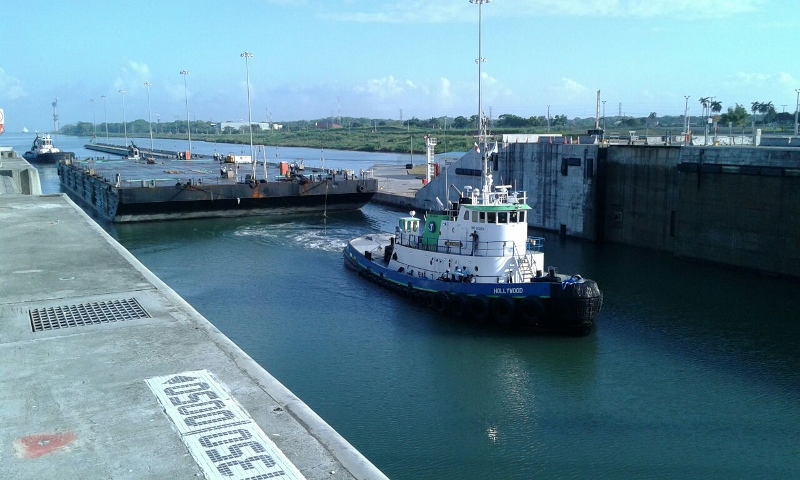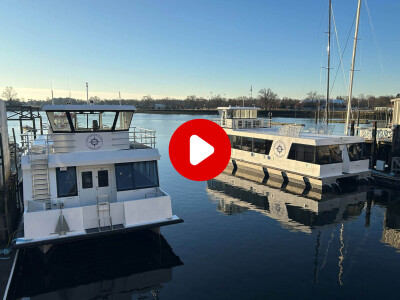New Orleans-based TradeWinds Towing and the crew of the tug Hollywood claimed honors for the first transit by a tug and barge of the newly widened Panama Canal locks. They took the deck barge JMC 3336, bound for Seattle, through the canal Jan. 20.
The 106.5’x33.7’x14’, 4,200 hp Hollywood is an industry veteran, built in 1985 by Sanchez Marine Shipbuilding Inc., Fall River, Mass. TradeWinds acquired the tug in 2016, and recently put her through a life-extension program at the Conrad Deepwater Shipyard, Amelia, La.
With two EMD-16-645-E2 engines and a Markey TDSD-32 winch with 2000’ of 2” wire port and starboard, the Hollywood has a bollard pull of 52 tons, according to company specifications.
The JMC 3336 has a 120’ beam, 14’ wider than the old Panamax standard of the canal before the widening, and was used for oil field work in Mexico before its purchase by new owners in Washington State, said Mike Brook, TradeWinds’ port captain in New Orleans.
TradeWinds Towing operates a fleet of seven oceangoing tugs, ranging in power from 2,600 hp to 5,750 hp. They operate throughout the U.S., Caribbean and the Americas, with voyages as far as Hawaii, Alaska, Senegal, and Chile. For their big barge tows “400’x100’ is typical. This one is a little bit wider,” Brook said.
If not for the wider canal, the only route to Seattle would be 9,000 miles through the Straits of Magellan and up the Pacific coast of the Americas — “economically not workable,” Brook said.
During the canal transit, an assist tug of the Panama Canal Authority kept control of the barge’s stern and slowed it as the Hollywood and its two entered each lock chamber. The transit was arranged by shipping agency Gateway Transit, longtime canal agents based for the past century at Colon and Balboa.
“Everything went pretty well. The initial conversation was whether we’d have to break tow and let their tugs take it through,” Brook said. But the Hollywood took the barge all the way through the two-day transit, tying up midway in Gatun Lake.
As of Tuesday, the Hollywood and its tow were still working their way up the Pacific off Mexico, with arrival in Seattle expected before mid-February.




.jpg.small.400x400.jpg)
